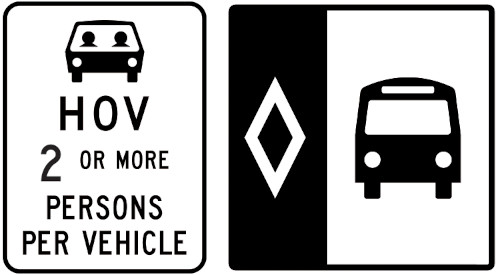 Question: I own a smart car and was wondering what the rule is when it comes to using a HOV lane. Technically, it is half the length of a standard car, so I was wondering when the minimum number of passengers is 2, if this would mean one for me.
Question: I own a smart car and was wondering what the rule is when it comes to using a HOV lane. Technically, it is half the length of a standard car, so I was wondering when the minimum number of passengers is 2, if this would mean one for me.
Also, I believe having to have 2 passengers is unfair, because it means that I have to have a 100% occupancy rate when someone with a mini-van barely has 40%, while my car pollutes much less and use much less space on the highway.
Finally, when such limit is 3...it is impossible for me to use such HOV lane, even if I would have a passenger, with a 100% occupancy rate.

High Occupancy Vehicle Defined
An HOV vehicle is defined by the Motor Vehicle Act Regulations as:
"high occupancy vehicle" means
(a) a bus, or
(b) a vehicle under 5,500 Kg GVW that is carrying at least the minimum number of persons specified by the applicable traffic control device;
HOV Lane Use
The definition doesn't say anything about the number of passengers the vehicle is designed to carry, what size it is, or how much pollution it may or may not create. The aim is to move the most people with the fewest vehicles to reduce highway congestion. To some extent, this also reduces pollution.
In The Future
I suspect that eventually we will all be using low pollution vehicles and then would we all by trying to use the HOV lane if this were allowed?
Change HOV Lane to HOT Lane
Your Smart Car would be able to use a HOT Lane if BC implemented them. HOT lanes are essentially a combination of HOV lanes and tolled lanes; they offer one occupant vehicles the choice to enter HOV lanes by paying a toll.
Learn More
- DriveSmartBC Article on Using HOV Lanes
- HOV Lanes Don't Make Sense - Fraser Institute
- HOV Lanes in Canada - Transport Canada
Share This Article
- Log in to post comments
